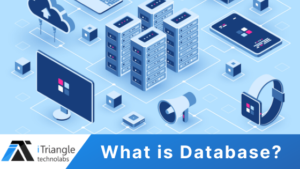Table of Contents
Types of Database
Centralized Database
Information data is stored in a centralized location and users from different locations can access this data. This type of database contains application processes that help users to access data even from a remote location. Various types of authentication procedures are implemented to verify and validate users. Similarly, a registration number is provided by the application processes that keep track and record of data usage. The local area office handles this.
Distributed Database
Contrary to the centralized database concept, distributed databases have contributions from common databases as well as information captured by local computers. The data does not exist in one place and it is distributed across various sites of an organization. These sites are connected to each other with the help of communication links which help them to easily access the distributed data.
You can imagine a distributed database in which different parts of a database are stored in many different locations, as well as application processes that are replicated and distributed between different points in a network.
There are two types of distributed database, identical and odd. Databases that have the same underlying hardware and run on the same operating system and application processes, for example, are known as homogeneous DDBs. All physical locations in a DDB. Whereas the operating system, the underlying hardware as well as application processes may vary at different locations of the DDB known as asymmetrical DDB.
Personal Database
Data is collected and stored on a personal computer that is small and easily manageable. The data is typically used by a single department of an organization and accessed by a small group of people.
End-User Database
The end-user is not usually concerned about transactions or operations performed at various levels and only knows about the product which may be a software or an application. Therefore, it is a shared database specifically designed for the end-user, just like managers at different levels. A summary of complete information has been collected in this database.
Commercial Database
These are paid versions of a large database designed specifically for users who want to access information for help. These databases are unique and one cannot afford to maintain such a large amount of information. Access to such databases is provided through commercial links.
NoSQL Database
They are used for large sets of distributed data. There are some big data performance issues that are effectively handled by relational databases. Such issues are easily managed by NoSQL databases. Very efficient at analyzing large-size unstructured data that can be stored in multiple virtual servers in the cloud.
Operational Database
Information related to the operation of an enterprise is stored inside this database. Functional lines like marketing, employee relations, customer service, etc. require such a database.
Relational databases
These databases are classified by a set of tables where the data fit into a pre-defined range. The table consists of rows and columns where the column contains an entry for data for a specific range, and rows contain instances defined by the category for that data. Structured Query Language (SQL) is the standard user and application program interface for a related database.
There are various simple operations that can be applied to tables that make it easy to extend these databases, combine two databases with a common relationship, and modify all existing applications.
Cloud databases
Today, data is being stored exclusively in the cloud, also known as a virtual environment, either in the hybrid cloud, public or private cloud. A cloud database is a database that is optimized or built for such a virtualized environment. Cloud databases have various benefits, some of which are the ability to pay for storage capacity and bandwidth on a per-user basis and they provide scalability on-demand with high availability.
Cloud also gives Database Enterprises the opportunity to support business applications in software-as-a-service deployments.
Object-Oriented Databases
Object-oriented databases are a collection of object-oriented programming and relational databases. There are various items that are created using object-oriented programming languages such as C ++, Java that can be stored in relational databases, but object-oriented databases are well suited for those objects.
Object-oriented databases are organized instead of objects and data instead of logic. For example, a multimedia record in a relational database can be a fixed data object as opposed to an alphanumeric value.
Graph Databases
A graph is a collection of nodes and edges where each node is used to represent a unit and each edge describes the relationship between entities. A graph-oriented database or graph database is a type of NoSQL database that uses graph theory to store, map, and query relationships.
Graph databases are basically used to analyze interconnects. For example, companies can use a graph database to mine social media customer data.
Conclusion
In this article we have seen different types of databases and how do they work. You can choose any type of database or combination of databases based on your requirements.

